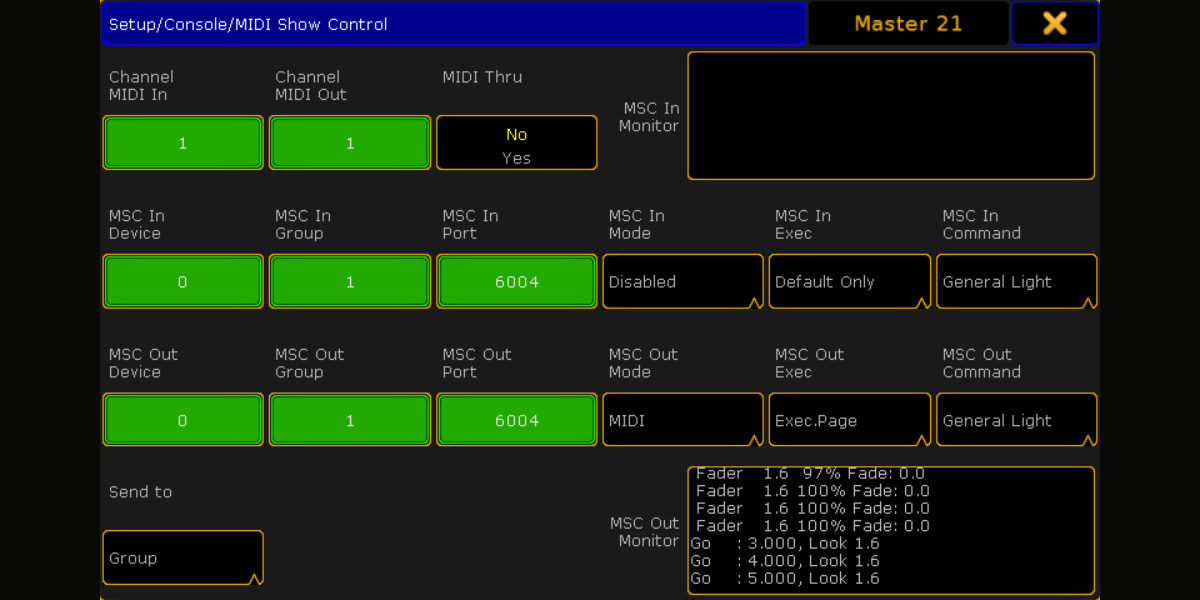MIDI Show Control (MSC) is a specialized protocol within the broader MIDI (Musical Instrument Digital Interface) standard, designed to facilitate complex live performances. MSC allows various devices, such as lighting rigs, audio equipment, and stage machinery, to communicate seamlessly, creating a cohesive and synchronized show. This guide delves into the intricacies of MIDI Show Control, its benefits, applications, and the technology behind it.
Understanding MIDI Show Control
What is MIDI Show Control?
MIDI Show Control (MSC) is a subset of the MIDI protocol, specifically developed to manage live performances. While MIDI is primarily used for musical instrument communication, MSC extends its capabilities to control non-musical devices such as lights, pyrotechnics, and automation systems. This protocol enables precise coordination of various elements, ensuring a smooth and synchronized performance.
How Does MSC Work?
MSC works by sending MIDI messages to control devices. These messages are structured to convey specific commands, such as starting or stopping an action, changing settings, or triggering effects. Devices equipped with MSC capabilities can interpret these messages and execute the corresponding actions in real-time.
Key Features of MIDI Show Control
Standardized Protocol
MSC follows a standardized protocol, ensuring compatibility across various devices and manufacturers. This standardization simplifies the integration of different systems, reducing the complexity of setting up and managing live performances.
Real-Time Control
One of the standout features of MSC is its ability to provide real-time control over multiple devices. This allows for precise timing and synchronization, which is crucial for complex live shows.
Scalability
MSC is highly scalable, making it suitable for a wide range of applications, from small theatrical productions to large-scale concerts and events. The protocol can manage an extensive number of devices without compromising performance.
Flexibility
MSC offers a high degree of flexibility, allowing for customization and adaptation to specific needs. Users can program and modify commands to suit different scenarios and requirements.
Applications of MIDI Show Control
Theatrical Productions
In theater, MSC is used to control lighting, sound, and stage machinery, ensuring that all elements are perfectly synchronized. This enhances the overall production quality and provides a seamless experience for the audience.
Concerts and Live Music Events
MSC plays a crucial role in concerts and live music events, where precise control over lighting, sound, and special effects is essential. It allows for dynamic changes and real-time adjustments, contributing to a more immersive performance.
Broadcast and Media Events
For broadcast and media events, MSC helps in managing various technical aspects, including camera movements, lighting, and audio synchronization. This ensures a professional and polished output.
Theme Parks and Installations
Theme parks and installations use MSC to coordinate rides, attractions, and shows. This integration enhances the visitor experience by providing smooth and well-timed effects.
Technology Behind MIDI Show Control
MSC Messages
MSC messages are the core of the protocol. These messages include specific commands, such as:
- Go: Starts an action or sequence.
- Stop: Stops an action or sequence.
- Resume: Resumes a paused action or sequence.
- Timed Event: Schedules an action or sequence to occur at a specific time.
Each message includes parameters that define the action, target device, and other relevant details.
Controllers and Interfaces
To use MSC, specialized controllers and interfaces are required. These devices interpret MSC messages and translate them into actions that the controlled devices can execute. Controllers can range from dedicated hardware units to software-based solutions running on computers or tablets.
Integration with Other Systems
MSC can be integrated with other control systems, such as DMX (Digital Multiplex) for lighting and OSC (Open Sound Control) for audio. This interoperability allows for comprehensive management of all aspects of a live performance.
Benefits of Using MIDI Show Control
Enhanced Coordination
MSC enhances coordination between different devices, ensuring that all elements of a performance work together seamlessly. This results in a more cohesive and professional presentation.
Increased Efficiency
By automating various aspects of a show, MSC increases efficiency and reduces the workload on operators. This allows them to focus on creative aspects rather than technical details.
Improved Reliability
MSC provides a reliable framework for managing live performances. Its standardized protocol and real-time capabilities ensure consistent and predictable results.
Creative Flexibility
MSC offers creative flexibility, allowing producers and directors to design intricate and dynamic shows. The ability to customize and modify commands opens up new possibilities for innovation and creativity.
Conclusion
MIDI Show Control is a powerful tool that has revolutionized the way live performances are managed. Its ability to synchronize and control multiple devices in real-time enhances the quality and impact of theatrical productions, concerts, and other live events. By providing a standardized, flexible, and scalable solution, MSC continues to play a crucial role in the entertainment industry. Embrace the capabilities of MIDI Show Control to elevate your live performances to new heights.



